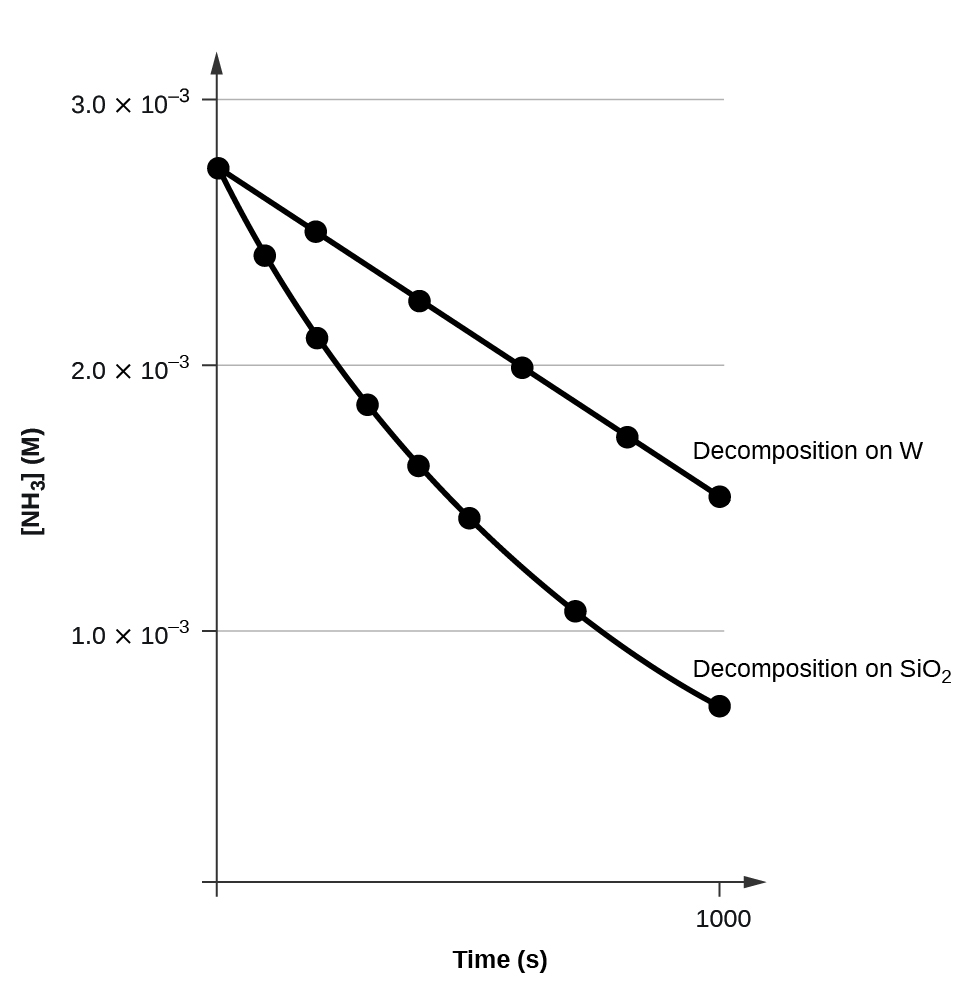Zero-Order Reactions
For zero-order reactions, the differential rate law is: $$rate=k[A]_0 =k \label{eq1}\tag{1}$$
A zero-order reaction thus exhibits a constant reaction rate, regardless of the concentration of its reactant(s). This may seem counterintuitive, since the reaction rate certainly can’t be finite when the reactant concentration is zero. For purposes of this introductory text, it will suffice to note that zero-order kinetics are observed for some reactions only under certain specific conditions. These same reactions exhibit different kinetic behaviors when the specific conditions aren’t met, and for this reason the more prudent term pseudo-zero-order is sometimes used.
The integrated rate law for a zero-order reaction is a linear function: $$[A]_t =−kt+[A]_0 \label{eq2}\tag{2} \\y=mx+b$$
A plot of [A] versus t for a zero-order reaction is a straight line with a slope of −k and an intercept of [A]0. The figure below shows a plot of [NH3] versus t for the decomposition of ammonia on a hot tungsten wire and for the decomposition of ammonia on hot quartz (SiO2). The decomposition reaction exhibits first-order behavior at a quartz (SiO2) surface, as suggested by the exponentially decaying plot of concentration versus time. On a tungsten surface, however, the plot is linear, indicating zero-order kinetics.

Graphical Determination of Zero-Order Rate Constant
Use the data plot above to graphically estimate the zero-order rate constant for ammonia decomposition at a tungsten surface.
Solution: The integrated rate law for zero-order kinetics describes a linear plot of reactant concentration, [A]t, versus time, t, with a slope equal to the negative of the rate constant, −k. Following the mathematical approach of previous examples, the slope of the linear data plot (for decomposition on W) is estimated from the graph. Using the ammonia concentrations at t = 0 and t = 1000 s:
$$k = -slope\\ = -\frac{(0.0015\; M-0.0028\;M)}{(1000\;s-0\;s)}\\ =1.3\times 10^{-6} \frac{M}{s}$$